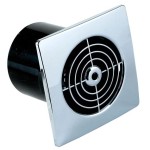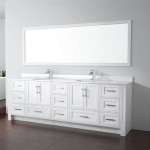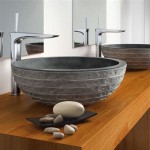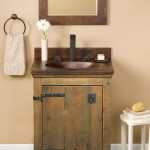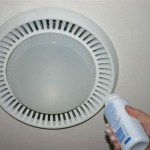Bathroom Parts Names: A Comprehensive Guide
The bathroom, a ubiquitous space in modern living, is comprised of a complex network of fixtures and components. Understanding the terminology for these parts is essential for effective communication with plumbers, contractors, and suppliers during renovations, repairs, or new installations. This article provides a comprehensive overview of common bathroom parts names, categorized for clarity, aiming to enhance understanding and facilitate informed decision-making.
Plumbing Fixtures
Plumbing fixtures are the most prominent and functional aspects of a bathroom. They are directly connected to the water supply and drainage systems, facilitating essential hygiene activities.
Toilet: A toilet, also known as a water closet or WC, is a fixture designed for the disposal of human waste. It typically consists of a bowl, a tank, and a flushing mechanism. The bowl holds water and receives waste, while the tank stores water used for flushing. Various types of toilets exist, including gravity-fed, pressure-assisted, and dual-flush models. Gravity-fed toilets rely on gravity to flush waste, while pressure-assisted toilets use compressed air. Dual-flush toilets offer the option of using less water for liquid waste and more water for solid waste, promoting water conservation.
Sink: A sink, also referred to as a washbasin or lavatory, is a bowl-shaped fixture used for washing hands, face, and other personal hygiene tasks. Sinks come in various styles, including pedestal sinks, wall-mounted sinks, undermount sinks, and vessel sinks. Pedestal sinks are freestanding fixtures with a supporting pedestal. Wall-mounted sinks are attached to the wall, creating an open space underneath. Undermount sinks are installed beneath the countertop, creating a seamless look. Vessel sinks sit on top of the countertop, resembling a decorative bowl.
Bathtub: A bathtub is a large container designed for bathing. Bathtubs are available in a variety of shapes and sizes, including rectangular, oval, corner, and clawfoot tubs. They can be made from different materials, such as acrylic, cast iron, or fiberglass. Some bathtubs include features such as jets for hydrotherapy or built-in seats for comfort.
Shower: A shower is a fixture that sprays water for bathing. Showers can be part of a bathtub (shower-tub combination) or a separate stall. Showers typically include a showerhead, a shower valve (controlling water temperature and flow), and a shower enclosure (walls and a door or curtain). Showerheads come in various styles, including fixed showerheads, handheld showerheads, and rain showerheads. Shower valves can be single-handle or dual-handle, and some feature thermostatic control to maintain a consistent water temperature.
Bidet: A bidet is a plumbing fixture designed for washing the perineal and anal areas after using the toilet. It is typically located next to the toilet and uses a stream of water to cleanse the body. Bidets can be standalone fixtures or attachments that can be installed on existing toilets. They promote better hygiene and reduce the need for toilet paper.
Drainage Components
Drainage components are essential for removing wastewater from the bathroom fixtures and transporting it to the main sewer line. Proper drainage is crucial for preventing clogs, leaks, and unsanitary conditions.
Drain: A drain is an opening that allows water to flow out of a fixture. Drains typically include a strainer or stopper to prevent debris from entering the drainpipe. Different types of drains are used for sinks, bathtubs, and showers, each designed to accommodate the specific flow rate and type of waste.
P-Trap: A P-trap is a U-shaped pipe located under sinks and other fixtures. It holds a small amount of water that creates a seal, preventing sewer gases from entering the bathroom. The P-trap also traps debris, preventing it from clogging the drainpipe. Regular cleaning of the P-trap is necessary to maintain proper drainage.
Drainpipe: A drainpipe is a pipe that carries wastewater from the P-trap to the main drain line. Drainpipes are typically made of PVC, copper, or cast iron and come in various sizes to accommodate different flow rates. They must be properly sloped to ensure that wastewater flows efficiently.
Vent Pipe: A vent pipe is a pipe that allows air to enter the drainage system, preventing a vacuum from forming that can siphon water from the P-traps. Vent pipes typically extend through the roof of the building, allowing air to circulate freely. Proper venting is essential for maintaining proper drainage and preventing sewer gases from entering the bathroom.
Cleanout: A cleanout is a fitting in the drainage system that provides access for cleaning out clogs. Cleanouts are typically located at strategic points in the drainage system, such as at the base of a vertical drainpipe or at the junction of two drainpipes. They allow plumbers to easily access the drainpipe and remove any obstructions.
Water Supply Components
Water supply components are responsible for delivering clean water to the bathroom fixtures. These components must be durable, corrosion-resistant, and properly installed to ensure a reliable water supply.
Water Supply Lines: Water supply lines are pipes that carry water from the main water supply to the bathroom fixtures. They are typically made of copper, PEX, or CPVC. Copper pipes are durable and corrosion-resistant, but they can be more expensive than other options. PEX (cross-linked polyethylene) pipes are flexible and easy to install, making them a popular choice for DIY projects. CPVC (chlorinated polyvinyl chloride) pipes are resistant to high temperatures and pressures, making them suitable for hot water supply lines.
Shut-Off Valves: Shut-off valves, also known as stop valves, are valves located on the water supply lines near each fixture. They allow the water supply to be shut off to a specific fixture without affecting the water supply to the rest of the bathroom. This is essential for making repairs or replacing fixtures. Shut-off valves can be ball valves, gate valves, or angle stops, each with its own advantages and disadvantages.
Faucet: A faucet is a valve that controls the flow of water from a water supply line. Faucets are used on sinks, bathtubs, and showers to regulate water temperature and flow rate. They come in various styles, including single-handle faucets, dual-handle faucets, and touchless faucets. Single-handle faucets allow for easy control of both water temperature and flow rate with one handle. Dual-handle faucets have separate handles for hot and cold water. Touchless faucets use sensors to detect hand movement and automatically turn on the water.
Shower Valve: A shower valve is a valve that controls the flow and temperature of water to the showerhead. Shower valves can be single-handle or dual-handle, and some feature thermostatic control to maintain a consistent water temperature. Thermostatic shower valves prevent scalding by automatically adjusting the water temperature if there is a sudden change in water pressure.
Water Heater: Although often located outside the immediate bathroom space, the water heater is a critical component for providing hot water to showers, bathtubs and sinks. Water heaters can be tank-style or tankless, with tank-style heaters storing a reserve of hot water and tankless heaters heating water on demand.
Other Bathroom Components
Beyond the core plumbing and drainage elements, bathrooms incorporate a range of other components that contribute to functionality and aesthetics.
Toilet Seat: The toilet seat is a hinged seat that attaches to the toilet bowl for comfort and hygiene. Toilet seats come in various shapes and sizes to fit different toilet models. They can be made from different materials, such as plastic, wood, or padded vinyl. Some toilet seats include features such as soft-close hinges or heated seats.
Toilet Paper Holder: A toilet paper holder is a fixture that holds a roll of toilet paper. Toilet paper holders can be wall-mounted, freestanding, or recessed into the wall. They come in various styles and finishes to match the bathroom decor.
Towel Bar: A towel bar is a horizontal bar that is used to hang towels. Towel bars are typically wall-mounted and come in various lengths to accommodate different sizes of towels. They can be made from different materials, such as chrome, stainless steel, or brushed nickel.
Towel Ring: A towel ring is a circular or semi-circular ring that is used to hang a hand towel. Towel rings are typically wall-mounted and are smaller than towel bars. They are often used in smaller bathrooms or near sinks where space is limited.
Mirror: A mirror is a reflective surface used for grooming and personal care. Mirrors are typically mounted on the wall above the sink. They come in various shapes and sizes and can be framed or frameless. Some mirrors include features such as integrated lighting or magnification.
Lighting Fixtures: Lighting fixtures provide illumination for the bathroom. They can include ceiling lights, vanity lights, sconces, and shower lights. Proper lighting is essential for visibility and safety. Bathroom lighting fixtures should be moisture-resistant and comply with electrical safety codes.
Exhaust Fan: An exhaust fan removes moisture and odors from the bathroom. It is typically located in the ceiling and vents to the outside. Exhaust fans help prevent the growth of mold and mildew and improve air quality. They are especially important in bathrooms with showers or bathtubs.
Shower Curtain or Door: A shower curtain or door encloses the shower area, preventing water from splashing outside. Shower curtains are typically made of fabric or plastic and hang from a shower curtain rod. Shower doors can be sliding, hinged, or pivot doors and are typically made of glass or acrylic.
Grab Bar: A grab bar is a safety device that provides support for individuals with mobility issues. Grab bars are typically mounted on the wall near the toilet or shower. They can help prevent falls and provide stability while standing or sitting.
Understanding Faucet and Shower Valve Cartridges
Within faucets and shower valves lies a crucial component: the cartridge. Understanding its function and types is essential for repairs.
Faucet Cartridge: The core of many modern faucets, the cartridge controls water flow and temperature mixing. When a faucet drips, the cartridge is often the culprit and replacing it can resolve the issue. Common types include ceramic disc cartridges (known for durability), ball cartridges (with a slotted ball regulating water), and compression cartridges (older style relying on rubber washers). Each type requires a slightly different replacement procedure, necessitating identification for proper repair.
Shower Valve Cartridge: Similar to faucet cartridges, shower valve cartridges regulate water flow and temperature in showers. Diverter cartridges, specifically, redirect water between the showerhead and tub spout. Like faucet cartridges, these can wear down over time, leading to leaks or difficulty controlling water temperature. Identifying the specific cartridge type (pressure-balancing, thermostatic, etc.) is crucial for selecting the correct replacement and ensuring proper shower operation.
Knowledge of these bathroom parts names empowers individuals to confidently engage in discussions about bathroom maintenance, renovations, and construction. It enables clearer communication with professionals and facilitates informed decision-making regarding product selection and repair strategies.

Bathroom Items Names English Lesson

Bathroom Definition Meaning Britannica Dictionary

The Bathroom What Are Names Objects That You Can Find In Learn It This Image Furniture English

Bathroom Safety Tips Thebath Com

House Plumbing Bathroom Image Visual Dictionary

Parts Of A Sink The Ultimate Guide

Sanitary Fitting Name Bathroom Names Accessories Pictures Plumbing

Parts Of A Toilet The Home Depot

Parts Of A Toilet The Home Depot

Bathroom Accessories And Voary Items Names Every English Beginner Must Know
Related Posts
